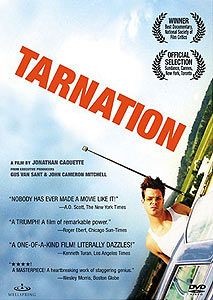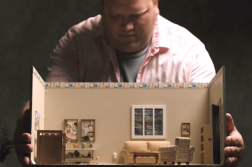Published in: March-April 2005 issue.
 Tarnation
Tarnation
Directed by Jonathan Caouette
Wellspring
IT IS HARROWING to watch, but Jonathan Caouette’s Tarnation is a stunning, one-of-a-kind achievement. Screened at Cannes and around the world, Tarnation was made for a couple hundred bucks using iMovie. But that’s the least interesting thing about it.






